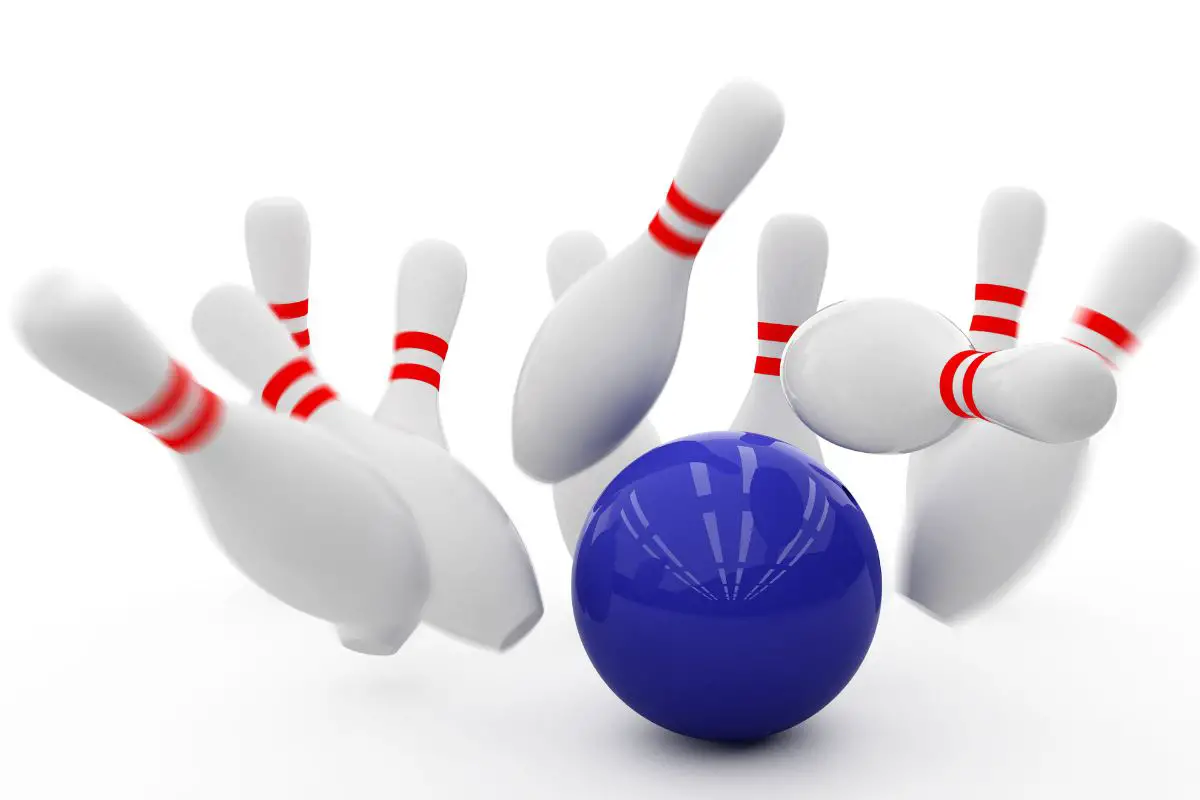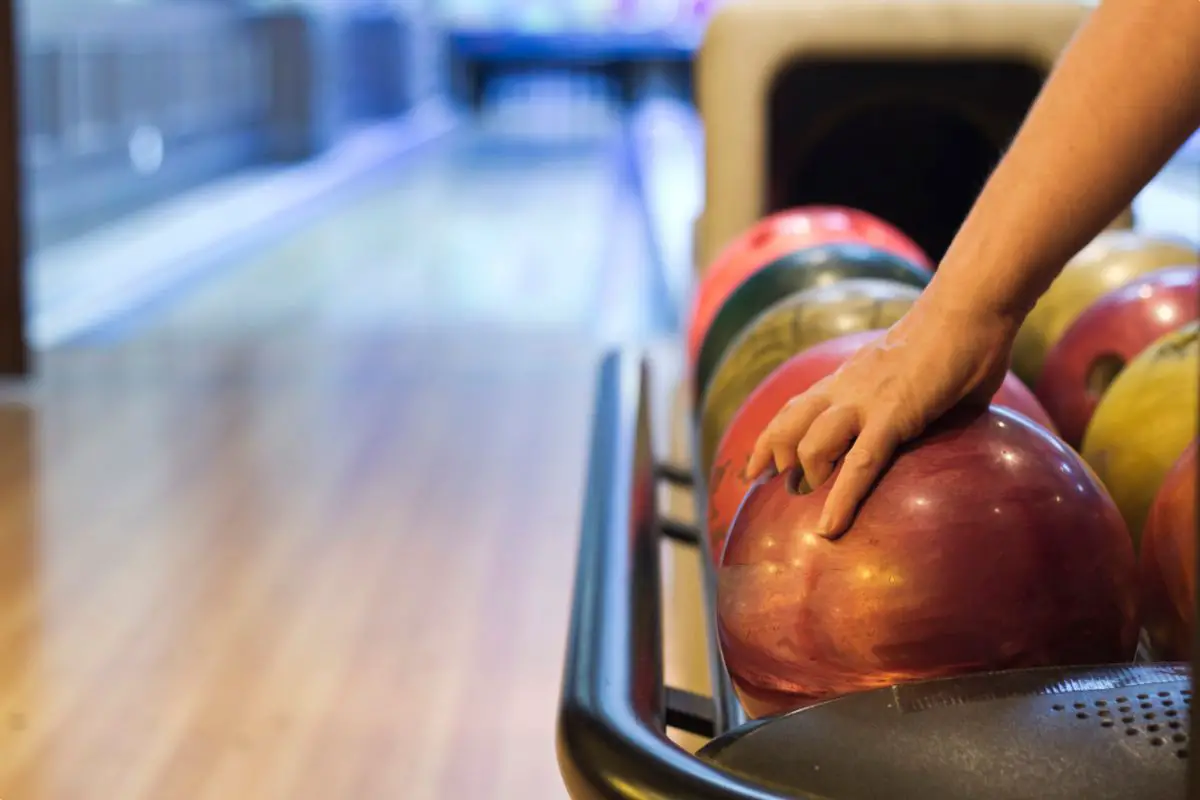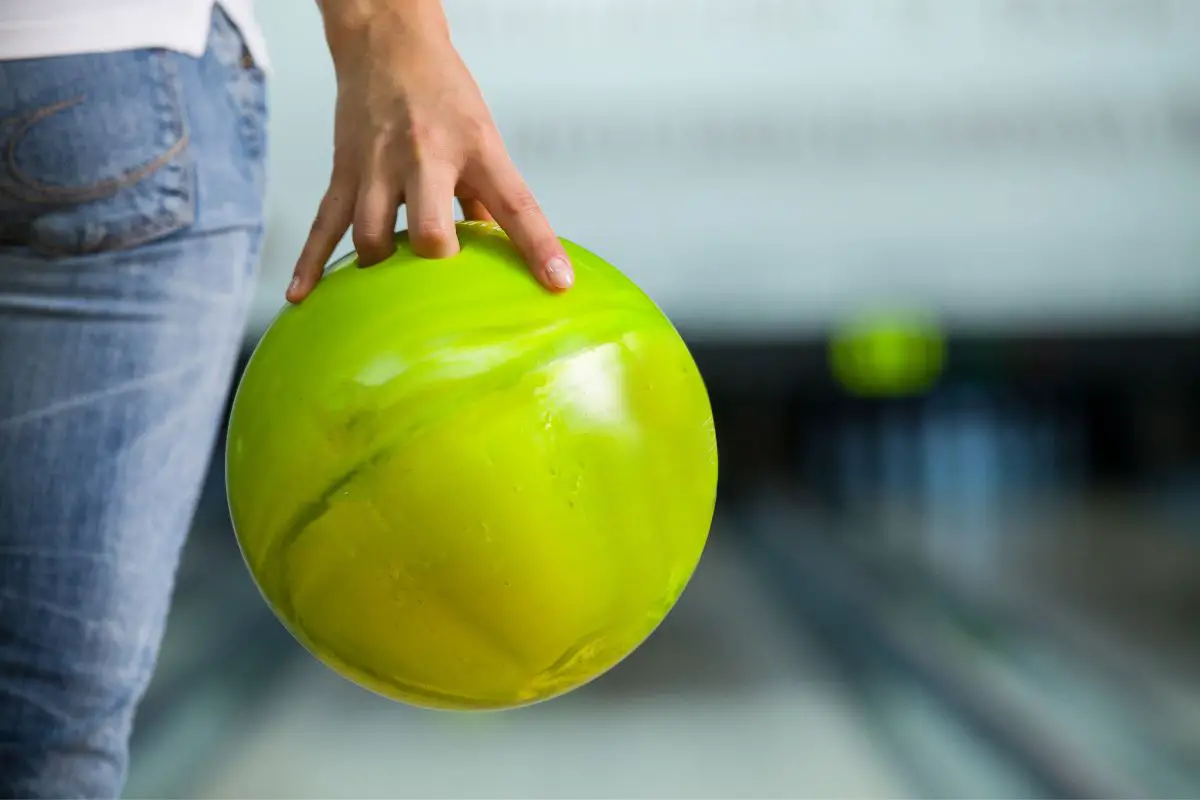The rules of bowling might seem simple. Bowl the ball down an aisle, and try to hit as many pins as possible. The number of pins you bowl over will amount to how many points you get, right?
Unfortunately, bowling isn’t actually that simple. The scoring system involves a couple of complex terms like strike and spare, which aren’t commonly used among beginners.
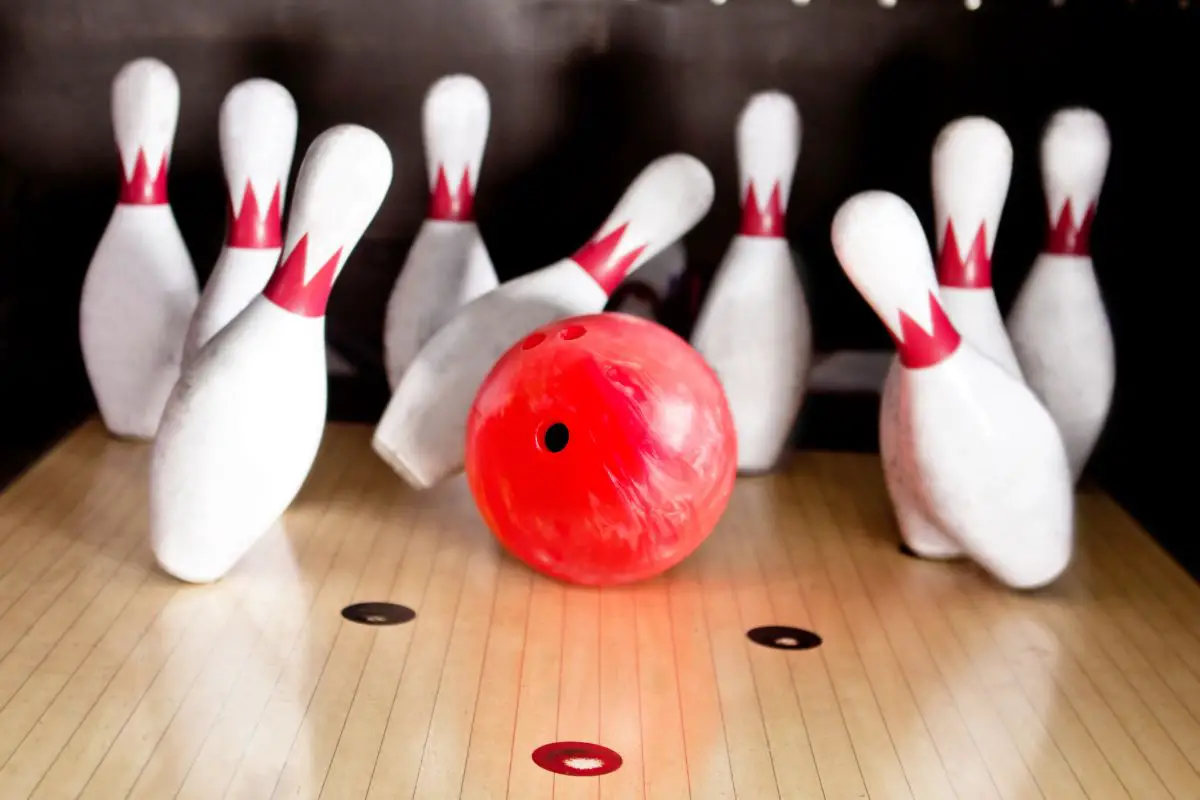
However, for experienced bowlers, knowing the difference between a strike and a spare is the first step to being good at bowling.
So, if you’re new to bowling and need to understand the scoring system, you’ve come to the right place. Here’s our guide on the difference between a strike and a spare in bowling!
Strike vs Spare: What’s The Difference?
Let’s get into it – what is the difference between a strike and a spare?
Firstly, the points are scored in bowling in a series of frames. A frame is a term used for a “round” of bowling, wherein individuals get to throw the ball twice in a frame.
Everyone knows that the aim of bowling is to bowl over as many pins as you can with one swing of the bowling ball. The most amount of pins you can knock down at one time is 10, which is known as a strike. So, if you manage to successfully knock down every single pin in a bowling lane with one hit, then that is a strike!
However, if you manage to knock down almost every pin but at least one is still standing, then this isn’t a strike. Never fear, because this is the reason why you get a second bowl in a frame.
If your second bowl manages to knock down the remaining pins, then this is known as a spare.
Is A Spare The Same As A Strike?
Both a strike and a spare are highly sought-after shots in the world of bowling. This is because the aim of bowling is to hit as many pins in as few bowls as possible. This is why it’s more impressive to get a strike compared to a spare, even though a spare will get you the same number of points.
Technically speaking, both a strike and a spare will get you ten points, one for each pin you have knocked down. Here’s the catch, though – every frame consists of two shots, but the tenth frame can offer a third shot if you score a strike or spare. If you perform a strike in this frame, then you get bonus points.
To put it simply, the fewer shots you make and the more pins you hit, the more points you’ll get! This is why a strike is more desirable than a spare because a spare uses one more shot compared to a strike.
Strike Bonus Points
The final tenth frame isn’t the only chance to win bonus points. If you score a strike in a frame, you will be rewarded with another set of pins to strike, giving you a potential of three shots in a frame.
However, this is when it gets complimented. Not only will you receive 10 points for the initial strike, but you will then be rewarded with double points from the next two rolls.
For example, say you score a strike, then a 4, then a 5. This will amount to 19 (the ten pins from the strike + the nine pins from the two other shots). The figure of the two other shots (9) is then doubled thanks to the strike bonus, giving the player a total of 28 points.
While it might sound confusing at first, most bowling systems do this scoring automatically. You will have to wait for the scores to be added up after the next two shots for the bonus points to be added.
Is A Strike Worth More Than A Spare?
Yes, a strike is worth more than a spare! This is because of the bonus point system.
For example, if you were to shoot a spare in a frame (hitting a 6 and a 4, for example), then you will only ever receive a maximum of 10 points.
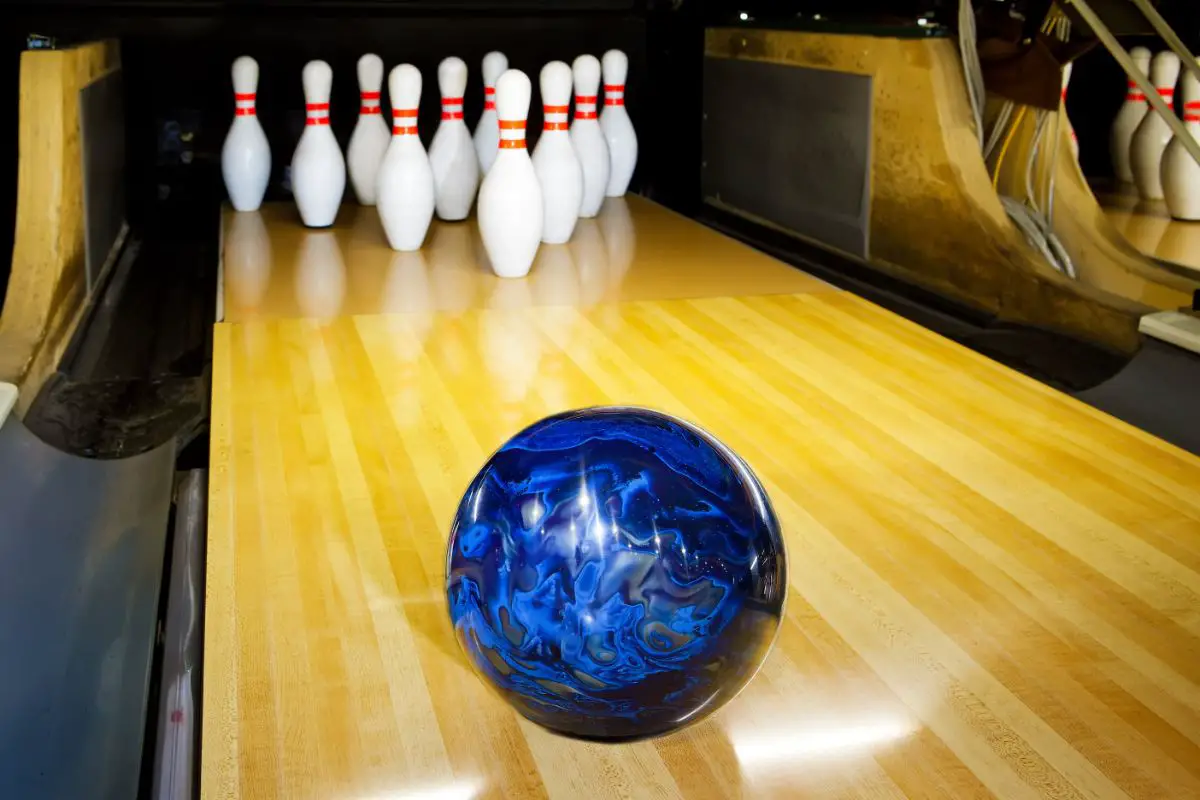
When you hit a strike, you will then be rewarded with double the amount of the next two points added together. This means that you will get far more points from a strike compared to a spare.
This is also exemplified by the extra shot offered in the tenth and final frame. If you are to score a strike, you will be rewarded with another set of pins, which will increase your score to that precious 300-point mark, which completes the game.
How To Score A Spare
Scoring a spare is often easier said than done depending on your skill level, where the pins are placed, and pure luck. Spares are scored by a series of two shots that eventually knock down all 10 pins. Technically speaking, anybody is likely to score a spare in their individual frames, because each frame consists of two shots.
For example, if you only hit 3 pins in your first shot but 7 in your next shot, then that will bring the total up to ten. However, the bonus points that come with a spare means that you will be given double points from the second shot, which in this case would be another 7, making the spare worth 17 points.
Another example would be if you hit 5 pins and then another 5 pins, amounting to 15 points altogether (from the two shots added together and the spare bonus of the second shot doubled).
This is why some experienced bowlers will often try to score a lower figure in the first hit, only to then finish the spare by finishing off the rest. This isn’t the best tactic compared to aiming for a strike, but it will help the points add up. For example, you’ll get more points for finishing a spare with 9 pins left than with 4 pins left in the second shot.
Everyone has different ways of scoring a spare. It all really comes down to practice and skill, and also whether you choose to use aids like bumpers or a ramp, which can enhance the possibility of scoring a spare.
How To Score A Strike
As explained before, a strike is scored when the player hits all ten pins down in a single hit. Not only will the player receive 10 points from the strike, but also double the amount of points from the next two hits.
For example, if you score a strike in your third frame, you will receive double the points scored in frames four and five.
This means that if you were to score multiple scores in a row, then the figure continues to be doubled. The more strikes you get, the more points you get!
While it’s pretty uncommon, experienced (and lucky) players have the potential to hit 12 strikes in a row – nine for each frame and then three for the final frame – which amounts to the grand total of 300 points.
Marking A Strike And A Spare
Now, most bowling alleys will feature screens that automatically add up your scores. However, if you are doing it manually, there’s an easy way to mark a strike and a spare without having to write down the words.
When someone scores a strike, it is denoted by marking an ‘X’ in the appropriate frame box. The subsequent bonuses are tallied when the next two shots are added up.
For a spare, you are to add a ‘/’ mark to the appropriate box. The bonus is tallied at the end of this frame when the second score can be added to the spare score of 10.
Open Frame Scoring
Open frame scoring refers to when a player does not knock down all 10 pins. Instead, they knock down between 0 and 9 pins on both shots in a frame. They will then be rewarded with the number of points corresponding to how many pins they knocked down in total.
For example, if a player knocks down 5 pins in the first shot and 4 pins in the second shot, then they would receive 9 points for that frame. As there is still a pin remaining, this doesn’t count as a spare and they cannot receive any bonuses.
Open frame scoring is probably the worst score for bowling because you can only get a maximum of 9 points. In fact, you could even score nothing at all if you’re particularly unlucky, which sets you back against the other players.
Frequently Asked Questions
Is A Strike More Than A Spare?
Yes, a strike is more than a spare! A strike is the highest-scoring shot you can get in a bowling game, and not just because of the 10 points you get from knocking down 10 pins.
When you achieve a strike, the next two shots are then automatically added and doubled to your total, making for a handy bonus for shooting a perfect shot.
A spare, on the other hand, is when you need two shots to hit all 10 pins. While you receive the 10 points from the pins as well as a bonus of the second shot (for example, if the spare is made up of a 4 and a 6, making for an overall score of 16), this is a lower bonus than a strike.
- A Comprehensive Guide to the Top Bowling Movies of All Time - December 23, 2023
- Bowling Shoes Selection Guide: How to Choose the Right Fit - September 27, 2023
- Bowling Ball Buying Guide: How to Choose the Right Ball for You - September 23, 2023


